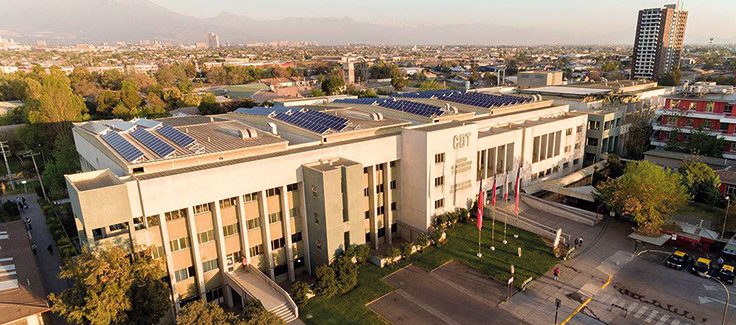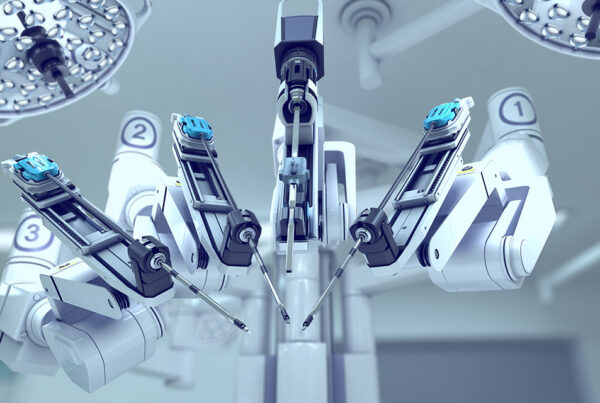By Daniela Chueke Perles
 In an exclusive interview with the HospiRank team, biomedical engineer Cristián Rojas—Head of the Medical Equipment Unit at Hospital Barros Luco Trudeau—says that after overcoming the challenges of the pandemic (which left a positive balance in terms of technological innovation, renewal and upgrading of hospital equipment, and improved decision-making processes) the institution, which is funded by the Chilean Ministry of Health, serves a population of close to 1.3 million people, and focuses on increasing excellence in patient care.
In an exclusive interview with the HospiRank team, biomedical engineer Cristián Rojas—Head of the Medical Equipment Unit at Hospital Barros Luco Trudeau—says that after overcoming the challenges of the pandemic (which left a positive balance in terms of technological innovation, renewal and upgrading of hospital equipment, and improved decision-making processes) the institution, which is funded by the Chilean Ministry of Health, serves a population of close to 1.3 million people, and focuses on increasing excellence in patient care.
After more than three long years of coping with the COVID-19 pandemic, do you think things have finally improved for hospitals, and why do you think that is or isn’t the case?
As regards hospital equipment, the pandemic ended up being a great opportunity for growth in technology: thanks to a successful bed conversion process, the Intensive Care Unit, ICU, went from having 31 beds before the pandemic to 111 beds during the peak of the health emergency, and in the Intermediate Treatment Unit, ITU, we went from 48 places to 73.
In this context, a lot of technological innovation was achieved thanks to collaboration between the hospital management, the South Metropolitan Health Service and the Ministry of Health, purchasing new equipment that enabled us to meet the demand from patients with severe COVID-19 conditions. Most of the equipment we received in 2020 and 2021 was associated with critical hospitalized patients.
Before the pandemic, we had 30 invasive mechanical ventilators; we now have 130. We received invasive and non-invasive mechanical ventilators, electric clinical beds, high- and medium-complexity vital signs monitors, and high-flow nasal cannulas. It was an opportunity to renew and modernize obsolete equipment, replacing it with state-of-the-art equipment in the different specialties.
We also optimized several management processes, which included setting up a COVID-19 committee that met weekly and made decisions based on the epidemiological vigilance being conducted; creating working committees to look at patient care in the context of the pandemic; beginning an unprecedented and successful internal vaccination process, and promoting the use of personal protective equipment among the staff.
The culture of self-care was not so instilled previously, nor was the widespread use of facemasks, gloves, and hand washing among staff who are not in direct contact with patients. We now continue working to the same standards.
Having overcome the challenges of the pandemic, what is the biggest challenge the hospital now has ahead of it?
We are at a point of reactivation and recovery of treatments that need to be postponed during the first waves. Other challenges are taking care of the hospital staff, advancing toward health care focused on individuals, and strengthening institutions.
Are there any interesting new equipment purchases planned for the near future?
Last year we installed a new scanner in the emergency room, to improve the flow of patients and the opportunity for treating those who come to this department with respiratory symptoms. Now, after an investment of more than 1.2 billion pesos, we purchased three endoscopy towers that feature CAD EYE technology, which means that, among other things, when performing colonoscopies, we can accurately detect and locate lesions that have a high probability of causing cancer. So, according to a certificate issued by the supplier, we are the first center in Latin America to have this artificial intelligence technology. We are considering incorporating more towers and integrating the endoscopy examination with the electronic medical records network.
In addition, we are planning to buy analysis equipment for pathological anatomy, imaging, cardiac ultrasound, and obstetrical ultrasound.
What are some of the key factors driving hospitals to purchase new medical equipment?
Purchases are made through a public tender where all the companies take part, and the decision is made by evaluating several factors: price, delivery times, and compliance with technical specifications.
Our priority, thinking about individuals, is to have the best equipment, and for that reason we place the most value on the equipment meeting the technical specifications, having factory-qualified and trained engineers to provide the maintenance, and the local supplier being an official brand representative that has access to original parts.



